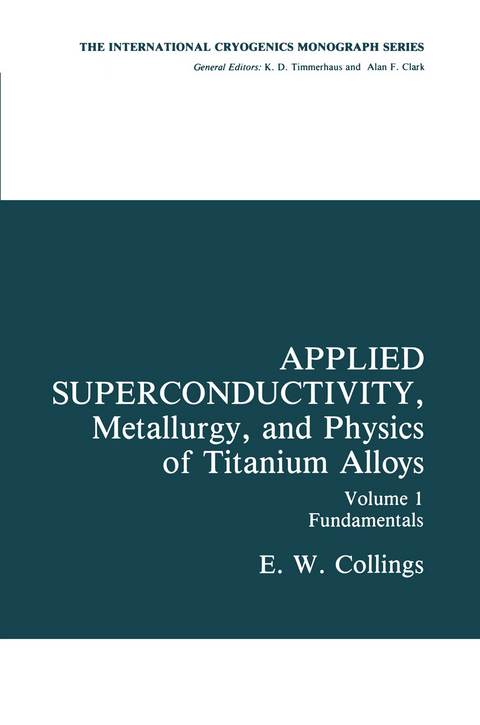
Applied Superconductivity, Metallurgy, and Physics of Titanium Alloys
Springer-Verlag New York Inc.
978-1-4612-9241-8 (ISBN)
I: Metallurgy.- 1. Equilibrium and Nonequilibrium Phases.- 2. Aging and Deformation.- 3. Mechanical Properties.- II: Physics.- 4. Dynamic Elastic Modulus.- 5. Electrical Resistivity.- 6. Thermal Conductivity.- 7. Magnetic Susceptibility.- 8. Low-Temperature Specific Heat.- 9. Low-Temperature Thermal Expansion.- III: The Superconducting Transition.- 10. Calorimetric Studies of the Superconducting Transition and the Mixed State.- 11. The Superconductive Proximity Effect.- 12. The Superconducting Transition Temperature.- IV: The Mixed State.- 13. Magnetic Properties of Superconductors.- 14. The Mixed State.- 15. The Paramagnetic Mixed State.- 16. The Critical State.- 17. The Upper Critical Field.- 18. Flux in Motion under the Influence of a Field Gradient.- 19. Magnetization and Critical Current Density.- References.- Symbols and Abbreviations.- Index of Plotted and Tabulated Data.
| Reihe/Serie | International Cryogenics Monograph Series |
|---|---|
| Zusatzinfo | 854 p. |
| Verlagsort | New York, NY |
| Sprache | englisch |
| Maße | 152 x 229 mm |
| Themenwelt | Naturwissenschaften ► Physik / Astronomie ► Atom- / Kern- / Molekularphysik |
| Naturwissenschaften ► Physik / Astronomie ► Festkörperphysik | |
| Naturwissenschaften ► Physik / Astronomie ► Thermodynamik | |
| ISBN-10 | 1-4612-9241-7 / 1461292417 |
| ISBN-13 | 978-1-4612-9241-8 / 9781461292418 |
| Zustand | Neuware |
| Haben Sie eine Frage zum Produkt? |
aus dem Bereich


